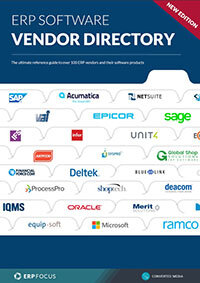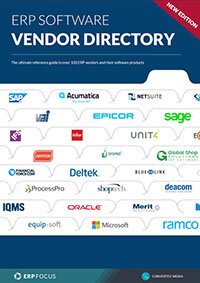The advantages of a fully-integrated WMS module in your ERP
Did the chicken or the egg come first? Should we get a best-of-breed warehouse management system or use the one that is an optional module from our ERP provider? There is no right answer to either question, but here are a few advantages of opting for an all-in-one system to manage your warehousing and ERP needs.
1. Cost
A WMS module is likely to be less expensive than a standalone WMS. The module will already be a part of the overall ERP so no extensive integration effort will be needed. But these assertions are not fact. That module in your ERP could be very expensive. Your needs for WMS could be light, with any low-cost WMS being able to satisfy them. Do your own research.
2. A more manageable user interface
Your ERP’s WMS module will have an interface matching the rest of the system you already use and are familiar with. Whether it is the best possible interface or not, you know how to use it so training and acceptance will be little or no problem. This is a big advantage to choosing a WMS module.
Find ERP systems with integrated WMS modules using our monthly-updated ERP vendor directory
3. A single database
A WMS module will use many of the same database tables you already employ. Few new tables will be required. Your custom reports and queries will still work and you know where to find the new fields the module will open up. Integrating a stand-alone WMS will use tables that contain each system’s version of the same data. You will need to manage each system separately and manage the integration as well. When parallel tables contain similar data, how will you choose which one is primary so your reports consistently tell the same story?
4. Time saved on integration efforts
Integrating any two systems is a difficult job. Fields in two databases must be mapped and linked. Rules must be developed for determining which field contains the “true” data for your needs. Further rules for transactions created so that the data after the transaction is consistent and reliable. A simple revision to one of the systems can force updates to some of the mapping and rules, often unexpectedly. The task can be done, of course, but using a module eliminates the effort and allows more important work to be done.
For those with a pre-existing WMS...
If you already have warehouse management, the situation is different. You know the user interface of the WMS and are already gaining value from improved management of your warehouse. To use these systems individually is an option but most often you still need to choose between integrating them or switching to the module.
Your WMS will add value to your business. One of the primary improvements is that WMS rules can help select the optimal location for inventory at any putaway transaction and as future demands suggest a better location. ERP can manage the amount of inventory but ERP relies on people to try to find the best locations.
Free white paper

ERP Software Vendor Directory
Put the most comprehensive ERP vendor directory on your desk today

Related articles
-

Nine signs you need an eCommerce ERP integration
A guest blog from Brightpearl discussing eCommerce ERP and integration
-

Secret KPI: Why Your ERP Implementation Team Matters More Than Software
Learn how Godlan ensures successful ERP implementation for manufacturers with proven strategies &...
-

Top 10 ERP selection criteria (including checklist)
The most important ERP selection criteria you should keep in mind during your selection process.

